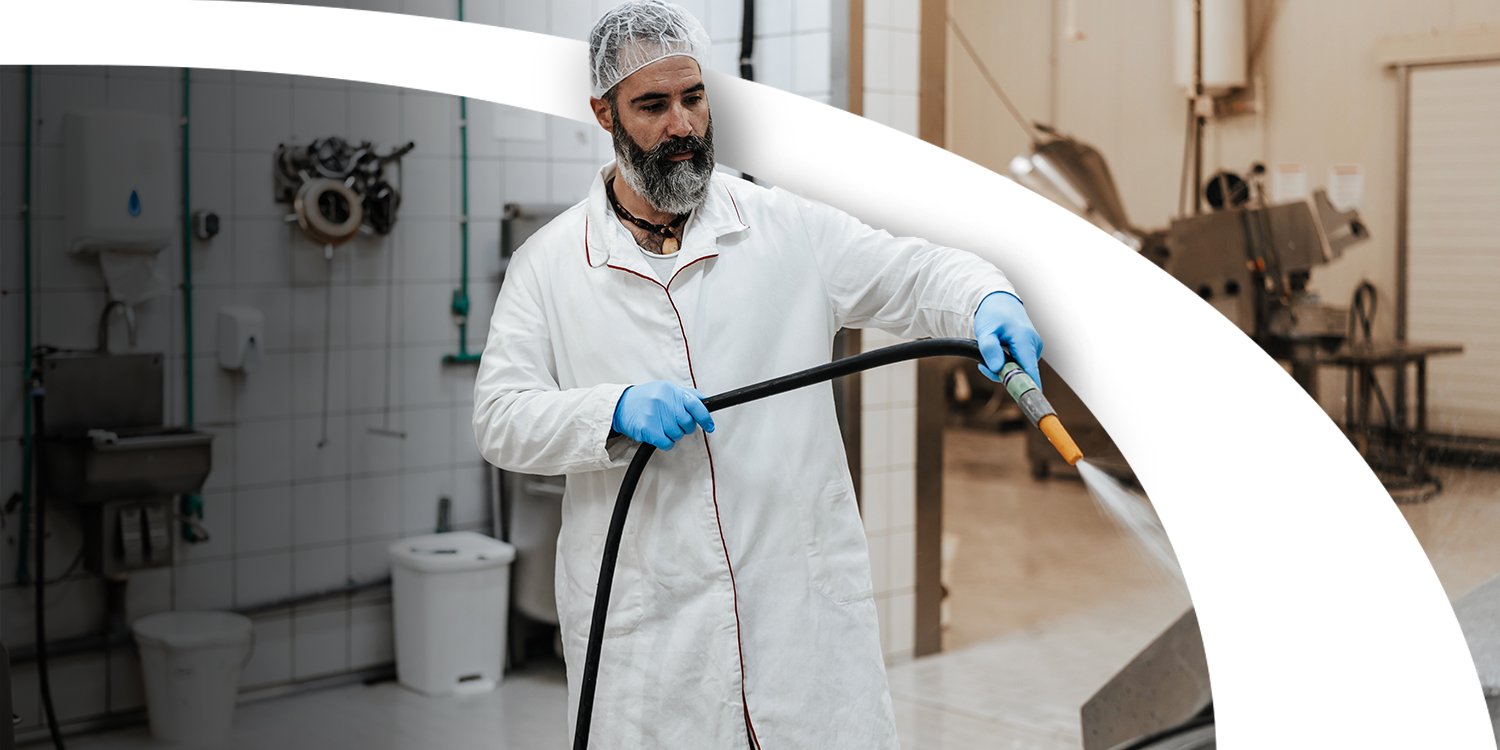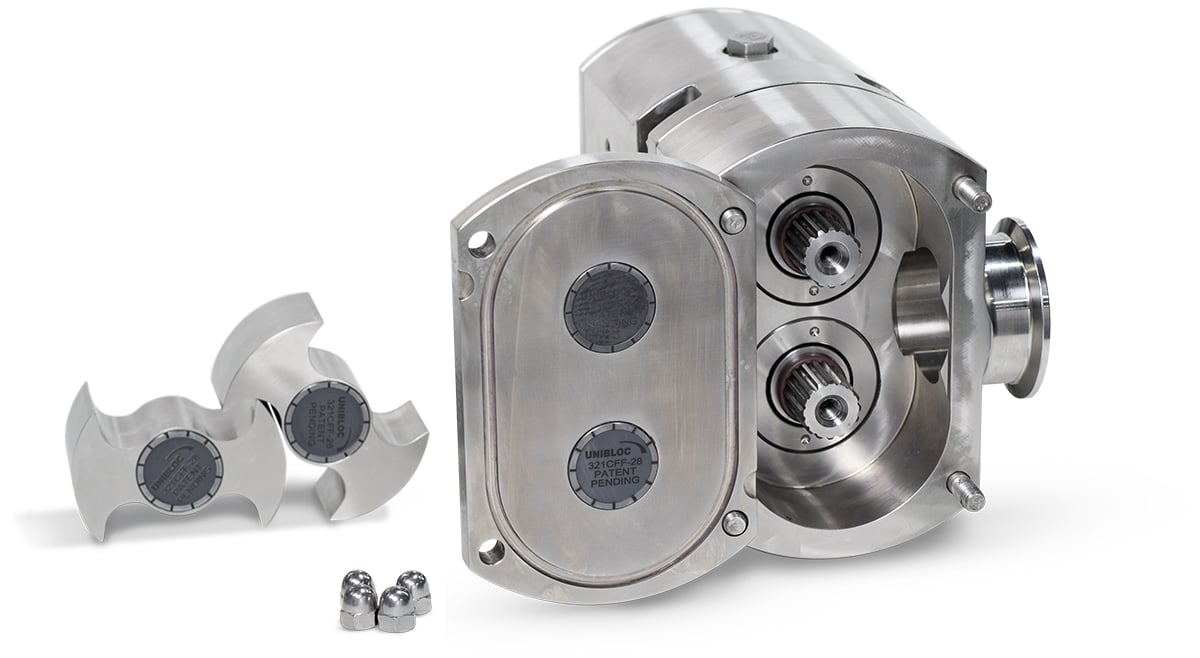Meat Processing: Strategies for Reducing Maintenance Costs

The variety of available beef and pork products keeps increasing to meet consumers’ desire for convenience and choice. The more modern the processing facility is, the more plant managers and the industry can keep pace. Yet, automation is not as widespread as it seems, and, with budget constraints, companies must look for technologies that can improve their business operations in identifiable ways.
This blog post reviews:
- The maintenance environment for beef and pork processors.
- The role that pumps play in downtime.
- How advances in pump design are helping to contain maintenance costs.
To gain economies of scale, beef and pork processors tend to have large facilities. That scale means that equipment reliability is especially important. Due to just-in-time delivery and penalties for missing service level agreements, even a minute of downtime can be costly to meat processors.
Frequently, equipment needs to be taken offline for routine maintenance. While this is a normal aspect of operations, there is a cost associated with the interruption in production. Strategies that minimize even routine downtime are of great interest to maintenance and operations managers, and this is especially true for hygienic pumps.
Pumps play a central role in meat processing. They are essential for transferring
- Ground beef and pork.
- Trimmed meat parts.
- Marinades.
- Prepared foods.
Fortunately, advances in pump technology can improve pump reliability and shorten maintenance times.
Speed cleaning and maintenance times.
Cleaning has multiple steps. The technician must remove the heavy pump cover, remove the rotors and other parts, wash everything thoroughly, and then reassemble the pump. Depending on the pump, cleaning may take an hour or more. Considering that this is a daily activity, cleaning consumes a significant amount of the maintenance budget.
Other than daily cleaning, pumps need other maintenance from time to time. For example, seals may need to be replaced. The technician must go through the same time-consuming disassembly and reassembly steps as for cleaning.
Thankfully, pumps are now available with a modern design that makes the pump simple and fast to disassemble. First, no tools are required. The worker opens the cover and easily removes the rotors with their fingers. In contrast, many pumps require tools to open the cover and remove rotor bolts. Working with tools introduces complexity and adds additional steps.
Some pumps are designed with fewer parts, making disassembly a snap. A technician can take apart, clean, and reassemble a Unibloc QuickStrip® FoodFirst pump in 20 minutes or less, with no tools required. In comparison, some competing pumps have as many as 40 parts because they were not designed for COP applications.
A Unibloc QuickStrip FoodFirst pump has a unique hinged arm that supports the heavy pump cover. Workers do not have to set the pump cover down and later lift it back into place. Rather, the cover stays near the pump where the worker can clean it with the rest of the pump. Then the cover swings easily into position for fastening.
Owing to a toolless strip-down process, fewer parts, and a supported cover, the Unibloc QuickStrip design dramatically accelerates pump maintenance and cleaning cycle times.
Reduce the chance of pump damage.
Experts at Unibloc Hygienic Technologies have observed that most pump damage occurs during maintenance. Often, the third shift is hard to staff, and third-shift workers are less skilled. If they are using tools to disassemble the pump, then managers run the risk of a worker scratching and galling the pump or its components. Considering a pump’s tight clearances, a gall could damage the pump over time.
Other damage occurs when workers install parts backward or in the wrong locations… sometimes bending them or breaking them in the process. Of course, this is terrible for pump reliability, and it increases the risk of component pieces entering the product.
Some pumps, like a Unibloc QuickStrip® pump, are designed for toolless disassembly and simple one-way assembly. Experience shows that this design all but eliminates damage to the pump by unskilled workers during cleaning.
Also, unlike comparable pumps, the rotors in a Unibloc QuickStrip pump are supported by shims at both ends. The design minimizes deflection of the rotor that can cause damaging wear in other pumps.
Minimize foreign object contamination.
It is not unheard of that small pump parts are lost during cleaning. This may result in damage to the pump if the pump is reassembled with a part missing. Even worse is when a small part is lost into the product stream. If the product is ground meat, then the object may not be visible at inspection.
Foreign object contamination is responsible for costly recalls and the many hours of maintenance associated with them. A good strategy for reducing the risk of this type of maintenance is to select a pump having fewer parts, especially fewer small parts. A Unibloc QuickStrip® FoodFirst pump will be a good choice.
Don’t blame the pump.
Sometimes, maintenance issues are not the pump’s fault. Rather, they arise from using the wrong type of pump for the application.
At beef and pork processing facilities, lobe pumps and screw pumps are typically the first choice for pumping ground meat and trimmings. A lobe pump has relatively large cavities suitable for gently moving solids and highly viscous materials. The fat in the beef and pork is more viscous at low temperatures, and meat processing plants tend to be around 35-40 degrees F (1-4 degrees C).
A screw pump works as well as a lobe pump in this application; it also gently handles shear-sensitive products like ground meat, but a lobe pump costs about half as much. What’s more, maintenance managers will appreciate that a lobe pump is much easier to disassemble than a screw pump. This is critical if the pump must be cleaned daily.
Sometimes, our experts encounter centrifugal pumps, but the speed is not easy to control . In addition, a centrifugal pump may not keep the form of the meat, creating smear that consumers dislike. This happens because centrifugal pumps operate at high speeds and the product is subjected to impact and centrifugal force. Centrifugal pumps are not ideal for this application.
Consider the reliability of the pump design.
The last thing a manager needs is unplanned downtime caused by a catastrophic pump failure. Not only does the line go down, but it stays down until a replacement pump can be installed. The impact on the maintenance budget is two-fold: the cost of downtime and the cost of a new pump. Fortunately, highly reliable industrial pumps are available.
Here are some features that make a pump more reliable.
- Managers should look for pumps that have oversized shafts and bearings that increase service life.
- Examine the pump design. Deflection of the shaft could cause the rotor to rub against the pump housing. A pump with a thick, short shaft will resist deflection better than a pump with a thin, long shaft.
- Many plant managers are not aware that they can use stainless-steel rotors instead of plastic rotors. Steel rotors last much longer than plastic rotors.
- Finally, consider the impact of worker error. A design that eliminates rotor bolts avoids the risk of a bolt backing out because a worker did not tighten it correctly. A protruding bolt in a piece of rotating equipment could damage a pump to the point of failure.
By selecting the right type of pump and by choosing a pump with timesaving and reliability-enhancing features, beef and pork processors can make the most of tight maintenance budgets.
To learn more about how Unibloc Hygienic Technologies products can help modernize your meat processing facility, please visit our dedicated beef and pork industry page.




